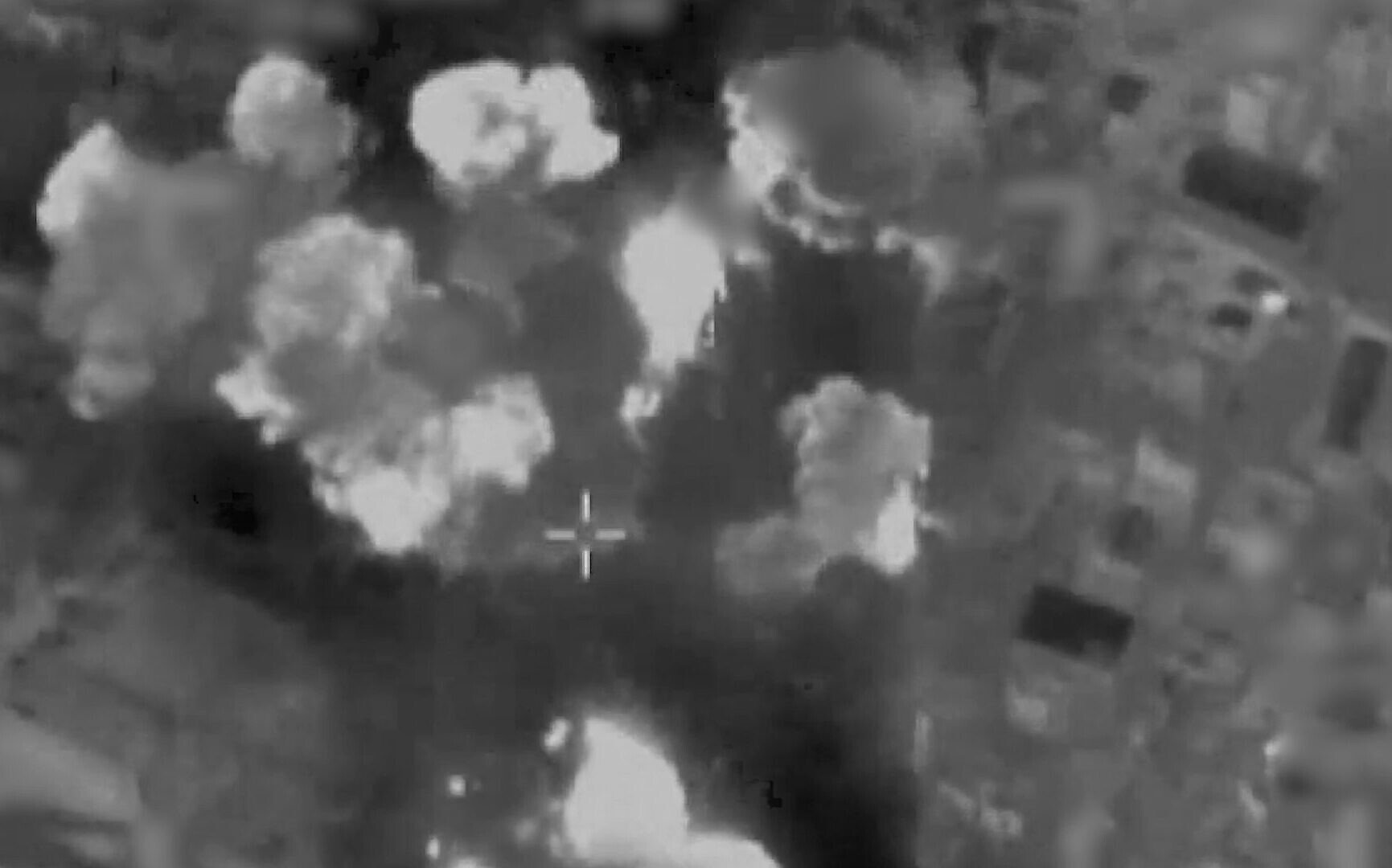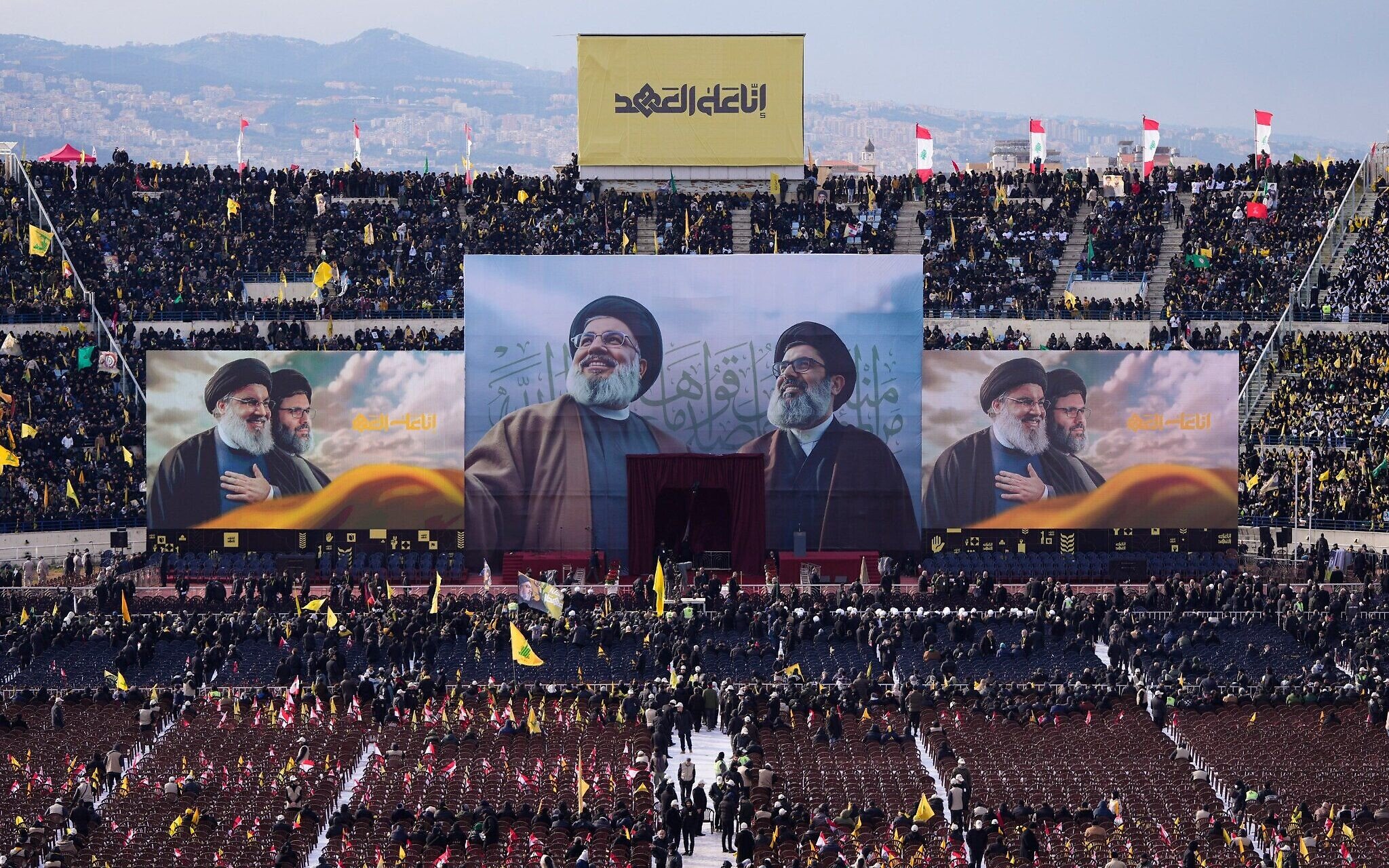



The IDF on Sunday revealed footage of its September 27 airstrike on Beirut that killed longtime Hezbollah leader Hassan Nasrallah and several other top officials in the terror group.
The clips show a fighter jet dropping bombs over Beirut, and an aerial view of multiple explosions on the ground.
Arabic media previously published videos purporting to show a street-level view of the strike and the retrieval of Nasrallah’s body from the rubble.
The IDF published the clips alongside footage of Israeli jets buzzing over Nasrallah’s funeral in Beirut on Sunday, in a show of force. Defense Minister Israel Katz said the flyover was meant to send Hezbollah “a clear message” that it will be destroyed if it attacks Israel. The military also carried out several strikes across Lebanon on Sunday, saying it targeted Hezbollah arms.
Nasrallah’s funeral was attended by tens of thousands of people, including a high-level delegation from Iran, and featured mass chants of “Death to Israel.”
The September 27 strike that killed the longtime Hezbollah leader saw Israeli Air Force fighter jets drop 82 heavy bombs on Hezbollah’s main underground headquarters in Beirut’s southern Dahiyeh suburbs, a stronghold of the terror group. The strike brought down several buildings.
According to the IDF, in addition to killing Nasrallah, the strike eliminated more than 20 Hezbollah commanders, including Ali Karaki, the commander of Hezbollah’s Southern Front, as well as Abbas Nilforoushan, a general in Iran’s Revolutionary Guard Corps.
In October, Israel also killed Hashem Safieddine, Nasrallah’s cousin and heir apparent, in a massive strike on Beirut. Safieddine’s body was honored in Beirut alongside Nasrallah’s, on Sunday ahead of his funeral.
Hezbollah had waited to formally bury the two until after the IDF’s withdrawal from southern Lebanon under the November 27 Israel-Hezbollah ceasefire. The agreement required Hezbollah to vacate the area and gave Israel 60 days — until January 26 — to withdraw. Israel was also given the right to act against imminent threats by Hezbollah.
Israel’s withdrawal deadline was later extended, with Beirut’s approval, to February 18. With the backing of Washington, a sponsor of the ceasefire, Israel withdrew from all but five strategic points. Beirut has expressed opposition to Israel’s continued presence.
Nasrallah’s assassination was followed by a limited Israeli invasion of southern Lebanon in a bid to stop Hezbollah’s persistent rocket fire, which had displaced some 60,000 residents of northern Israel.
Unprovoked, Hezbollah began attacking Israel on a near-daily basis on October 8, 2023 — a day after fellow Iran-backed group Hamas stormed southern Israel to kill some 1,200 people and take 251 hostages, sparking the war in Gaza.
Hezbollah is part of Iran’s so-called Axis of Terror, a loose coalition of armed groups united in Tehran’s commitment to destroy Israel.
Times of Israel staff contributed to this report.

